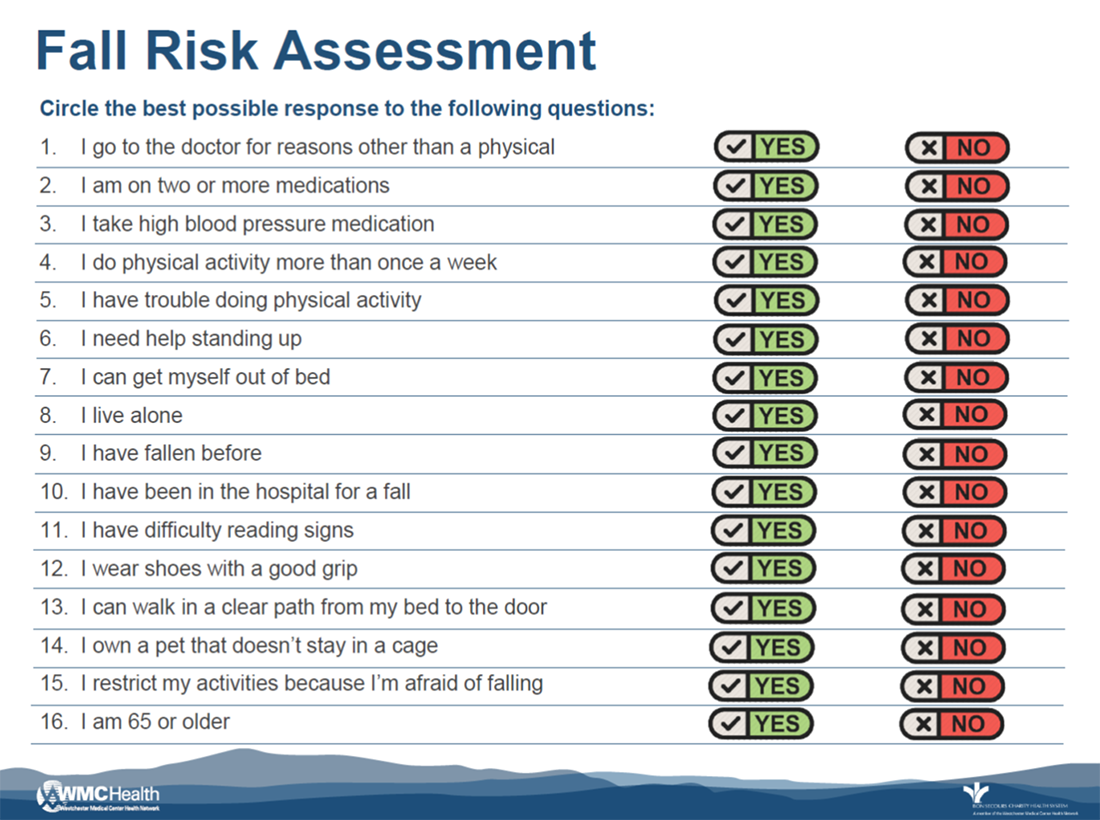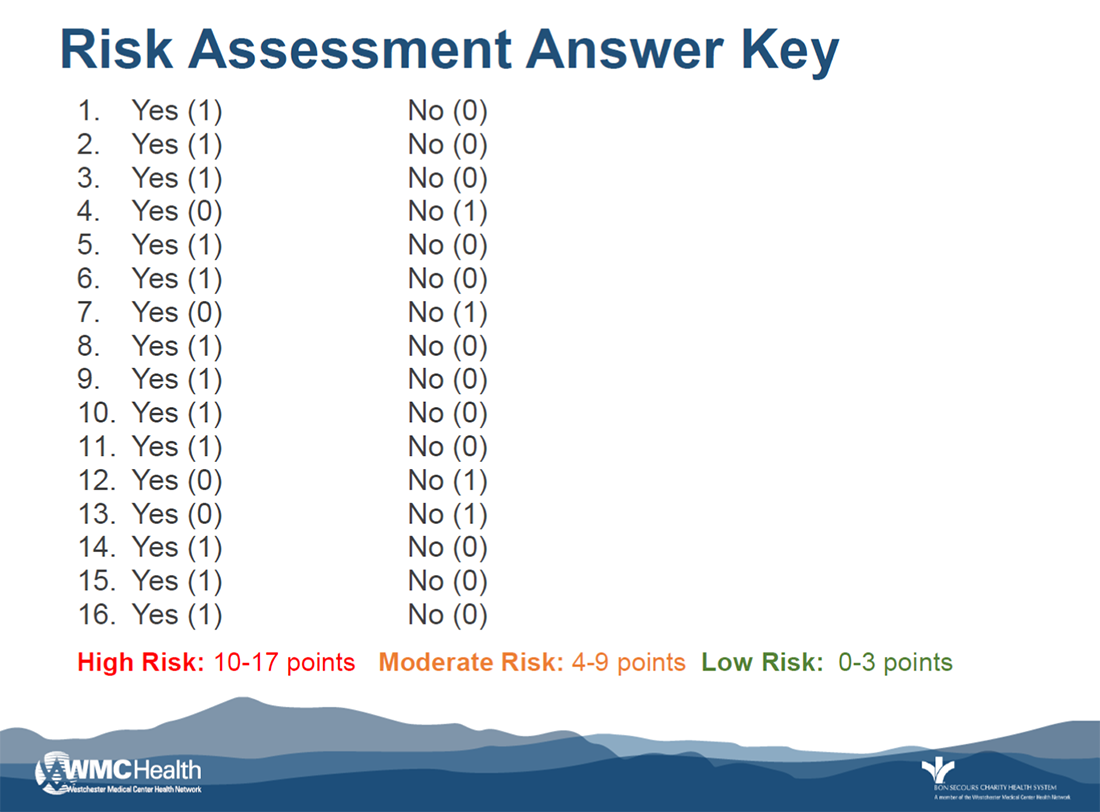People don't fall just because they are getting older; often, there is more than one underlying cause or risk factor that is involved.
As the number of risk factors increases, so does the risk of falling.
A person’s physical health or medical condition combined with other risks such as safety hazards in the home or community, are closely linked to an increased risk of falling.
Consequences of Falling:
- Treating fall injuries can be very costly ($31 Billion cost to Medicare)
- Each year, millions of people 65 and older are treated in emergency departments because of falls.
- Over 800,000 patients a year are hospitalized due to a fall injury.
- The average hospital cost for a fall injury is over $30,000.
- More than one-third of people aged 65 and older fall each year, and those who fall once, are two to three times more likely to fall again.
- More than 95% of hip fractures are caused by falling.
Preventing Falls at Home
According to the National Institute on Aging, six out of every 10 falls happen at home, where we spend much of our time and tend to move around without thinking about our safety. There are many changes you can make to your home that will help you avoid falls and ensure your safety. Below we have outlined several areas you can focus on to make your home more safe:
Lighting
- Place a light switch by the door in each room. Use switches that light up
- Make sure lamps are easy to turn on and off, or buy touch-on lamps
- Keep a flashlight in each room, or have an emergency light in one outlet in each room
Passageways
- Clear wide passageways between living areas
- Remove cords, glass tables and furniture that is wobbly or has sharp edges
Floors & Stairs
- Replace floor coverings that buckle, curl or have frayed edges
- Remove throw rugs, especially if you use a walker or a cane
- Put non-skid pads under area rugs
- Keep floors & stairs free from clutter
- Repair handrails that are not sturdy
Sleeping Area
- Keep a flashlight in nightstand
- Make sure light switch is easy to reach
- Keep pathway to bathroom free of clutter
- Remove “glossy” magazines & other reading matter on the floor near your bed
Bathroom
- Use textured strips or non-skid rubber mat in tub or shower
- Never use a towel rack as a grab bar
- Use bathmats with nonskid backing next to the tub, shower & sink
- Maintain cordless or cell phone access in bathroom area
Kitchen
- Store things you use most at waist level
- Use a step stool to retrieve items out of your reach; never use a chair as a step stool
Outdoor Areas
- Repair cracks and uneven surfaces in walkways
- Install proper lighting in driveways, walkways and entrances. Can be motion-detecting
- Install railings on steps, porches, balconies and decks
- Install grates or covers over window wells
-
Keep yard free from tools, tree branches and other debris
- Maintain adequate space in garage or parking area to enter/exit a vehicle
- Remove snow and ice promptly from outside stairways
Preventing Falls Away from Home
Prevent falls when you are away from your home with these simple fall-prevention measures:
What to do around black ice
-
Wear sturdy shoes that grip
- Lift your feet to maximize traction
- Try to fall forward, protecting your face and avoiding your head hitting the ground
Public Restrooms
- Be aware of wet floors around sink areas
- If paper towels are at some distance from sink area, get them before washing hands
Supermarkets
- Use a shopping cart whenever possible
- Be mindful of spills and other debris in the aisles
Fall Risk Assessment and Answer Key
Are you at risk for a fall? Take the below self assessment quiz:
Download and print assessment here


Exercises to Improve Balance
The 5 exercises that are shown below are aimed at improving balance and lower body strength.
They include:
Anywhere, Anytime
You can do balance exercises almost anytime, anywhere, and as often as you like, as long as you have something sturdy nearby to hold on to if you become unsteady. In the beginning, using a chair or the wall for support will help you work on your balance safely.
Balance exercises overlap with the lower body strength exercises, which also can improve your balance. Do the strength exercises -- back leg raises, side leg raises, and hip extensions -- two or more days per week, but not on any two days in a row.
Download our complete exercise guide with examples, tips and exercise demonstrations